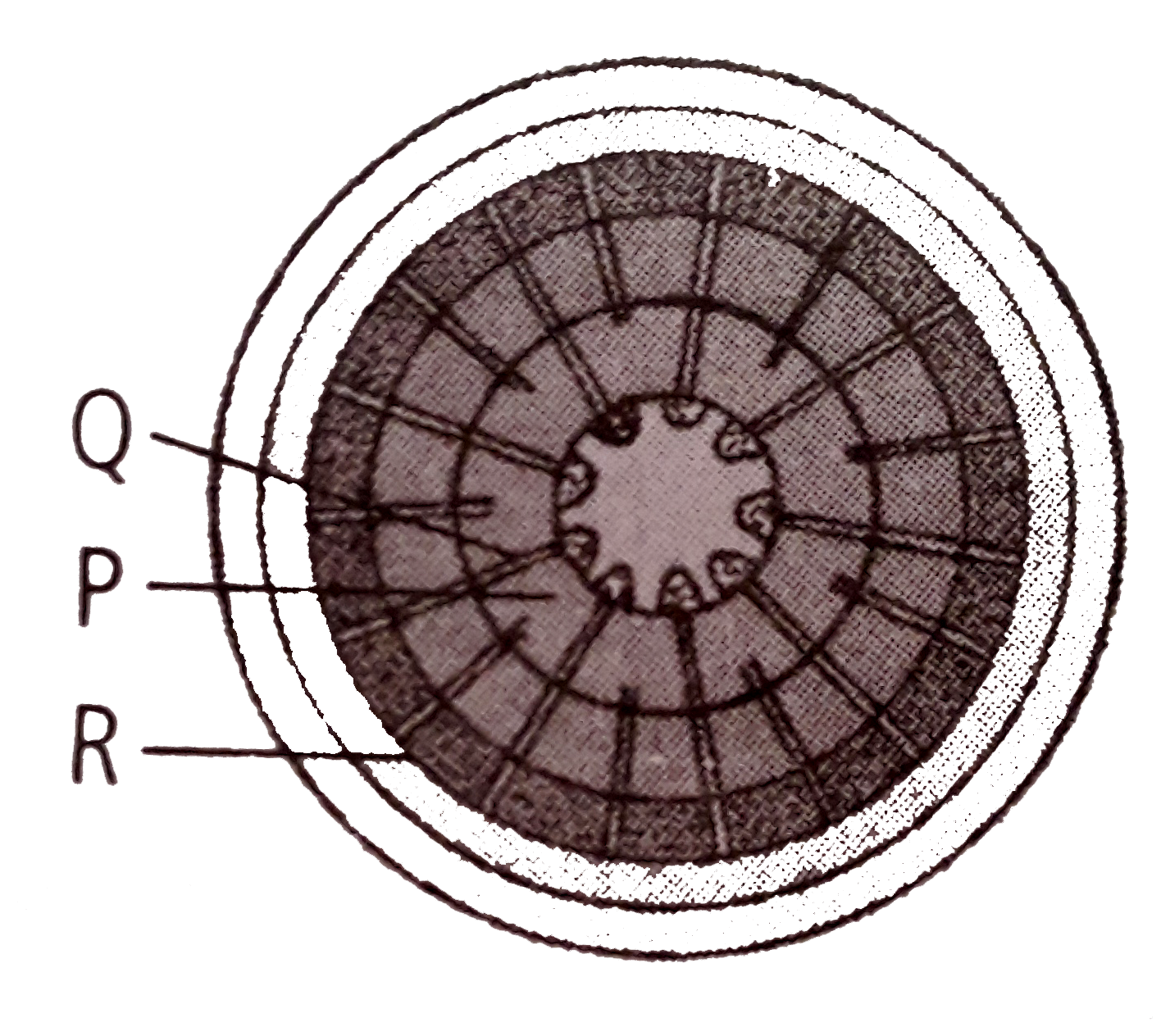Write a brief accountof secondary growth in a dicotyledonous root.
Step-by-Step Solution
1. Definition of Secondary Growth: Secondary growth refers to the increase in the girth of the plant, which occurs due to the activity of the cambium. In dicotyledonous plants, this growth is significant in both stems and roots.
2. Initiation of Secondary Growth: In dicotyledonous roots, secondary growth is initiated by the activity of the vascular cambium and cork cambium. These cambial tissues are responsible for producing new cells that contribute to the thickening of the root.
3. Role of Cambium: The vascular cambium is a layer of meristematic tissue that produces secondary xylem (wood) towards the inside and secondary phloem (bark) towards the outside. The cork cambium, also known as phellogen, produces cork cells that form the outer protective layer.
4. Development of Pericycle: The pericycle, which is a layer of cells located just inside the endodermis, plays a crucial role in secondary growth. The pericycle cells can divide and contribute to the formation of lateral roots. These cells are often described as being double-layered and mulberry-shaped.
5. Formation of Lateral Roots: Lateral roots arise from the pericycle through the process of cell division. This occurs when pericycle cells divide and form primordia, which eventually develop into lateral roots.
6. Characteristics of Pericycle Cells: The pericycle cells are parenchymatous in nature and are also referred to as conjunctive cells. They are located between the xylem and phloem in the root structure.
7. Cork Cambium and Secondary Cortex: The cork cambium produces cork cells that form a secondary cortex, known as phalloderm. This layer provides additional protection and helps in the storage of nutrients.
8. Variability in Secondary Growth: It is important to note that not all dicotyledonous roots exhibit secondary growth. While many do, some species may lack this feature.
Topper's Solved these Questions
- ANATOMY OF FLOWERING PLANTS Book:ICSEChapter:ANATOMY OF FLOWERING PLANTS Exercise:Test Your Progress (HOTS)
Explore 4 Videos
- ANATOMY OF FLOWERING PLANTS Book:ICSEChapter:ANATOMY OF FLOWERING PLANTS Exercise:Ncert Exercises with Answers
Explore 12 Videos
- ANATOMY OF FLOWERING PLANTS Book:ICSEChapter:ANATOMY OF FLOWERING PLANTS Exercise:Test Your Progress (Very Short Answer Type Questions )
Explore 31 Videos
- ANATOMY OF FLOWERING PLANTS - PLANT TISSUESBook:ICSEChapter:ANATOMY OF FLOWERING PLANTS - PLANT TISSUESExercise:REVIEW QUESTIONS (LONG ANSWER TYPE QUESTIONS)
Explore 20 Videos
Similar Questions
Knowledge Check

During the secondary growth in a dicotyledonous stem, the fusiform initials of vascular cambium give rise to which of the given labelled part?APBRCQDboth a and b
secondary growth is the production of
View SolutionWrite a brief account of viroids and prions.
View Solutionsecondary growth in dicot plants is mediated by
View SolutionWrite a brief note on MTP.
View SolutionWhich of the following meristems is responsible for extrastelar secondary growth in dicotyledonous stem
View SolutionAnomalous secondary growth found in dicot root of
View Solutionsecondary growth is best observed in
View Solution